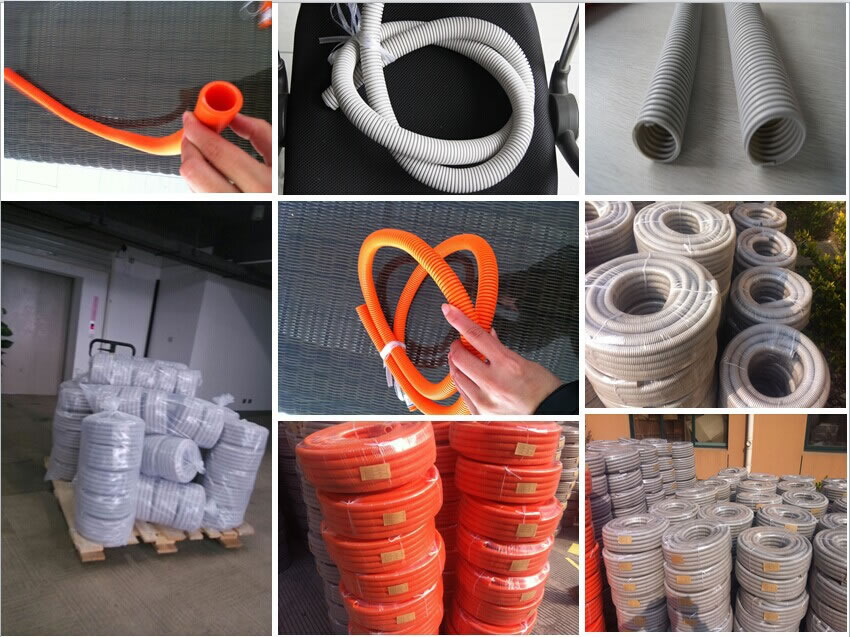2016-04-25
Installing cable-in-conduit or innerduct
can be accomplished in a number of ways.
These include:
1.
Pulling cable into the conduit using a pull line or rope
2.
Blowing cable into the conduit using specialized equipment that installs
the cable
in conjunction with a high volume jet of
air
3.
Pre-installed in the conduit by the conduit manufacturer
(cable-in-conduit)
Pulling Cable into Conduit
The traditional method of installing
cable-in-conduit has been to attach a pull line
(or rope) to the cable and pull the cable
into the conduit. This placement method
requires equipment to do the actual
pulling, to apply lubricants to reduce friction,
and devices that measure the amount of
tension being applied to the cable.
Conduit may be supplied with a preinstalled
pull line. This line is either a twisted
rope or a woven tape. These pull lines come
in a wide variety of tensile strengths
that range from 500 - 6000 pounds-force.
Pull lines are also available pre-lubricated
to reduce friction.
Pull tapes are available with sequential
footage marks. This type of tape is useful in
determining the progress of the cable pull.
Empty conduit would require a pull line to
be installed. Blowing a pull line
directly or blowing a lightweight line
through the conduit using compressed air
accomplishes this. This line is then used
to pull a pull line or a winch line into the
conduit to pull the cable.
Chapter 14
Duct and Conduit
497
A winch mechanism with a take-up reel is
used to pull the pull line with the
cable attached. The winch should have a
tension meter to monitor the amount of
tension being placed on the cable during
the pull. This monitor will reduce the
risk of damaging a sensitive fiber optic
cable during the pull. Check with the cable
manufacturer to determine the amount of
tension a cable can safely withstand.
The use of cable lubricants is strongly
recommended. Cable lubricants reduce the
amount of friction during a pull and
therefore allow longer cable pulls and reduce
the risk of damage to a cable during the
pull.
When the cable is attached to the pull
line, it is recommended that a swivel be
used between the two. This swivel will
allow the cable and pull line to move
independently in the conduit during the
pull and prevent unnecessary twisting of
the cable or pull line.
On very long pulls the use of mid-assists
is common. Mid-assist equipment can be
as simple as a person pulling on the cable
midway or it can be a capstan type device
that provides a controlled amount of
pulling tension to the cable to reduce the
tension on the cable and increase the
possible length of the pull.
If the conduit is in a manhole, protective
devices are needed to guide the cable into
the manhole and then into the conduit.
These guides protect the cable from scraping
on metal or concrete surfaces that could
damage the cable sheath.
Cable Blowing or Jetting
In recent years the practice of pulling
cable has frequently been replaced with a
newer method that uses compressed air to
blow the cable into the conduit. Cable
blowing requires specialized equipment
produced by a number of manufacturers
that utilize high volume air compressors.
There are two categories of air-assisted
cable placement: Low Volume/High Pressure,
and High Volume/Low Pressure.
In the first case a dart seal is attached
to the end of the cable and compressed air is
introduced into the duct building pressure
behind the seal, thus forcing the dart
forward and creating a tensile pull on the
end of the cable. At the same time, the
cable is pushed into the conduit through a
manifold seal using a tractor pusher. The
cable then experiences simultaneous push
and pull forces. In the second case, the
cable is tractor fed into the conduit,
again through a manifold seal, but this time has
no dart seal. Instead, cable progress is
based on the viscous drag of high volume air
alone. In these methods of cable
installation, much longer lengths of cable can be
placed than traditional cable pulling
methods, and the tension applied to the cable is
significantly reduced.
When blowing cables into conduit, the use
of corrugated conduit is not
recommended. Corrugated conduit causes
turbulence of the air that disrupts the
flow of air in the conduit and thus reduces
the distance a cable can be blown.
Chapter 14
Duct and Conduit
498
The conduit should also be capable of
withstanding the pressure of the air being
introduced. Generally the maximum pressure
used is in the range of 125 psi.
Caution should be exercised when using
compressed air to pressurize the conduit as
a loose joint can lead to injury due to the
conduit/joint exploding.
Cable Installed by the Conduit Manufacturer
(Cable-in-Conduit)
Some producers of conduit have the
capability of installing cable while the conduit
is being extruded. Each conduit producer
has specific size and length limits, and it is
necessary to discuss with the producer the
type of cable you desire to be installed: its
size, type of material and lengths.
Most producers can lubricate the conduit
during this process to allow easy
movement of the cable in the conduit for
future removal and replacement.
Cable can be tested prior to and following
installation to guarantee the integrity
of the cable. Check with the conduit
producer for specific information on testing
the cable.

Product/Technical FAQs
Conduit Network Pulling
